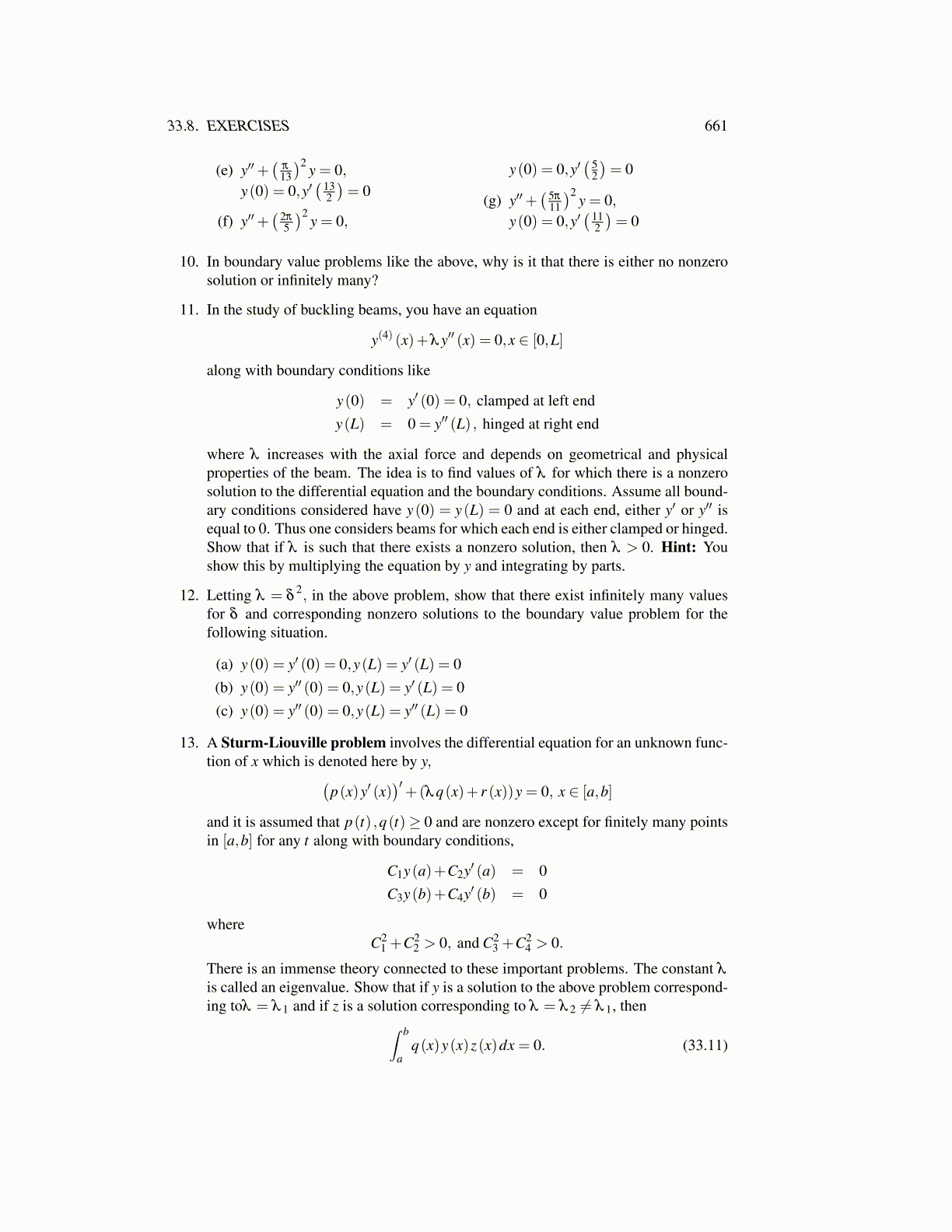
33.8. EXERCISES 661
(e) y′′+(
π
13
)2 y = 0,y(0) = 0,y′
( 132
)= 0
(f) y′′+( 2π
5
)2y = 0,
y(0) = 0,y′( 5
2
)= 0
(g) y′′+( 5π
11
)2y = 0,
y(0) = 0,y′( 11
2
)= 0
10. In boundary value problems like the above, why is it that there is either no nonzerosolution or infinitely many?
11. In the study of buckling beams, you have an equation
y(4) (x)+λy′′ (x) = 0,x ∈ [0,L]
along with boundary conditions like
y(0) = y′ (0) = 0, clamped at left endy(L) = 0 = y′′ (L) , hinged at right end
where λ increases with the axial force and depends on geometrical and physicalproperties of the beam. The idea is to find values of λ for which there is a nonzerosolution to the differential equation and the boundary conditions. Assume all bound-ary conditions considered have y(0) = y(L) = 0 and at each end, either y′ or y′′ isequal to 0. Thus one considers beams for which each end is either clamped or hinged.Show that if λ is such that there exists a nonzero solution, then λ > 0. Hint: Youshow this by multiplying the equation by y and integrating by parts.
12. Letting λ = δ2, in the above problem, show that there exist infinitely many values
for δ and corresponding nonzero solutions to the boundary value problem for thefollowing situation.
(a) y(0) = y′ (0) = 0,y(L) = y′ (L) = 0(b) y(0) = y′′ (0) = 0,y(L) = y′ (L) = 0(c) y(0) = y′′ (0) = 0,y(L) = y′′ (L) = 0
13. A Sturm-Liouville problem involves the differential equation for an unknown func-tion of x which is denoted here by y,(
p(x)y′ (x))′+(λq(x)+ r (x))y = 0, x ∈ [a,b]
and it is assumed that p(t) ,q(t)≥ 0 and are nonzero except for finitely many pointsin [a,b] for any t along with boundary conditions,
C1y(a)+C2y′ (a) = 0C3y(b)+C4y′ (b) = 0
whereC2
1 +C22 > 0, and C2
3 +C24 > 0.
There is an immense theory connected to these important problems. The constant λ
is called an eigenvalue. Show that if y is a solution to the above problem correspond-ing toλ = λ 1 and if z is a solution corresponding to λ = λ 2 ̸= λ 1, then∫ b
aq(x)y(x)z(x)dx = 0. (33.11)